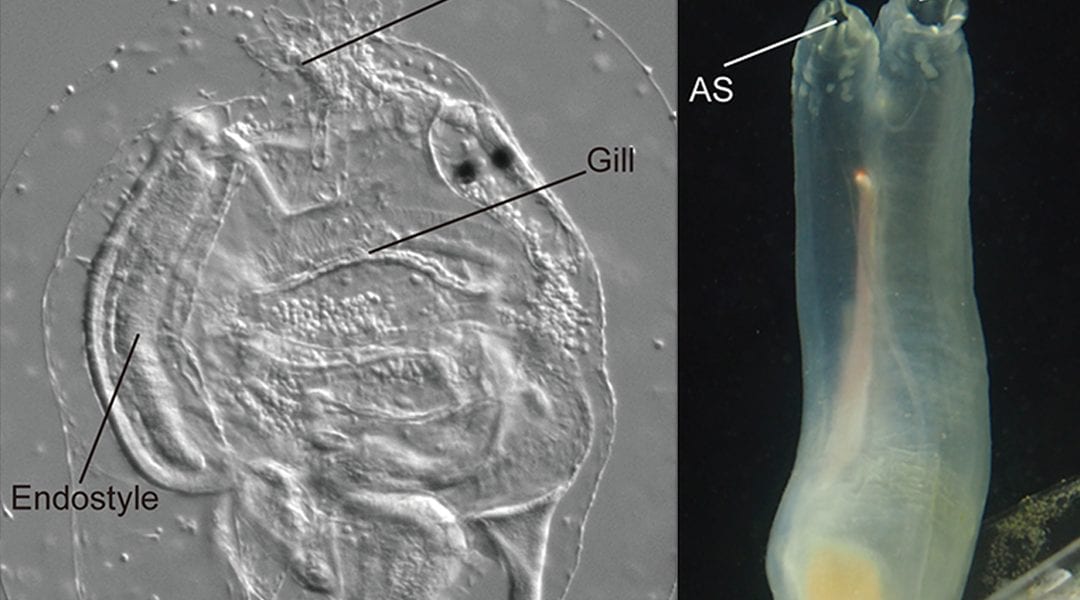Humans are included in the animal group called vertebrates. The major definition of vertebrates is possessing a backbone. Invertebrates are the animals that do not have a backbone. The evolution of vertebrates from invertebrates is the major topic of evolutionary biology, and by this reason it is important to elucidate the phylogenetic relationships between vertebrates and invertebrate groups. Recently, the biologists have suggested that tunicates are the invertebrate group that is the closest relative to vertebrates. Among tunicates, ascidians (or sea squirts) are the most abundant sub-group living in the ocean. Adult ascidians have vase-like bodies and are immotile, sessile organisms. When you look at adult ascidians, you would not be able to easily accept that ascidians are our closest relatives. However, the larvae of ascidians have typical tadpole body, and they swim by swinging their muscular tail. They look like tadpoles of amphibians and some kinds of fish. When you look at larvae of ascidians, you can easily understand that ascidians are closest to us among invertebrates.
This suggests that the shape of adult ascidians is quite different from that of larval ascidians. The dramatic conversion of the body shape from larval to adult ones is accomplished by metamorphosis. During metamorphosis, an ascidian loses its locomotive tail, and instead grows adult organs including gills, a heart, a stomach and intestines. These adult organs of ascidians are also seen in the vertebrate bodies, suggesting that the body organization of immotile adult ascidians resembles to that of vertebrates. The molecular mechanisms underlying the formation of ascidians’ adult bodies also have homologies to our mechanisms. In a review recently published in WIREs Developmental Biology, Sasakura and Hozumi discuss the recent knowledge about metamorphosis and adult organ formation of ascidians, in order to elucidate the molecular similarities with those in vertebrates.
Kindly contributed by Yasunori Saskaura and Akiko Hozumi.

















